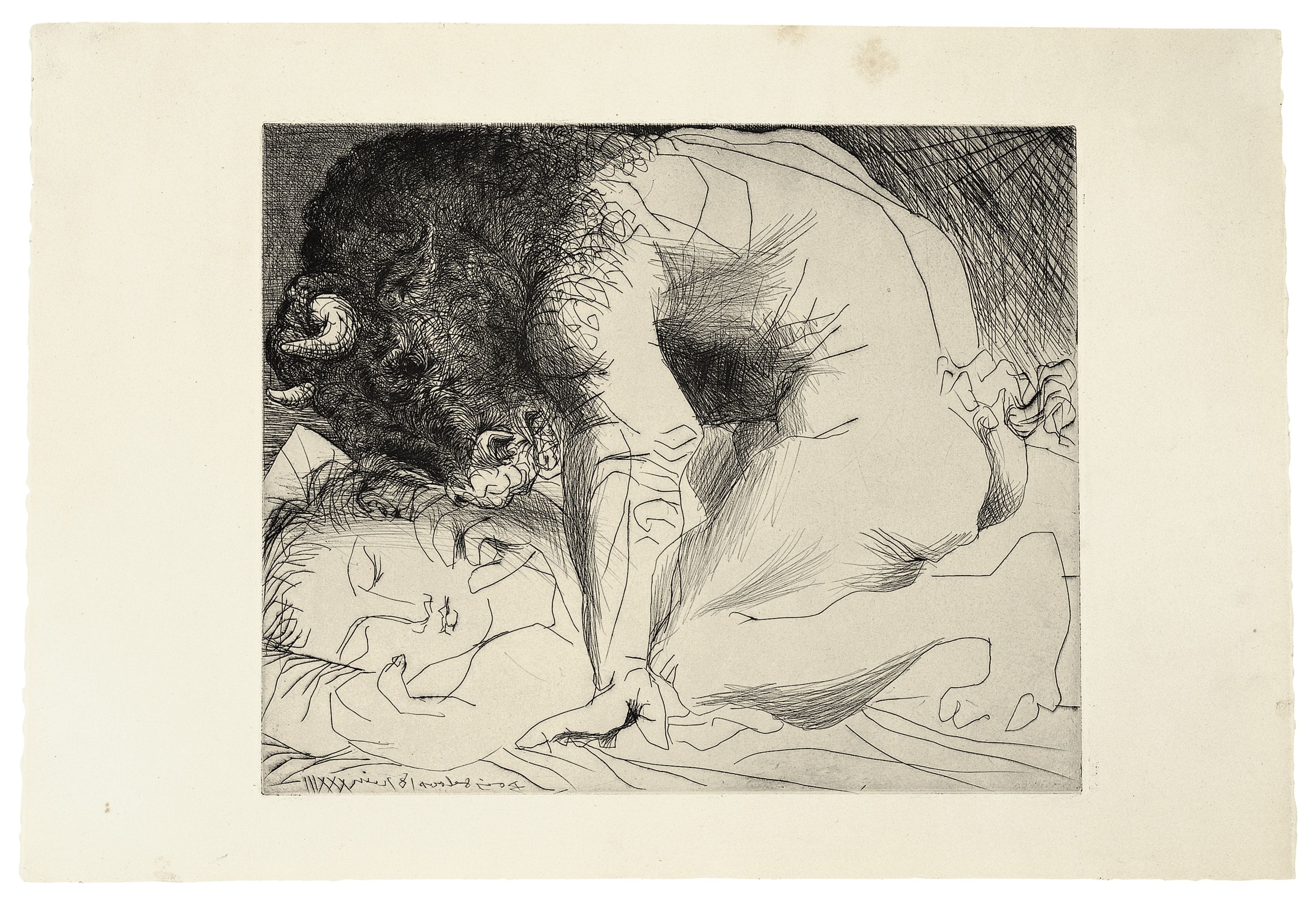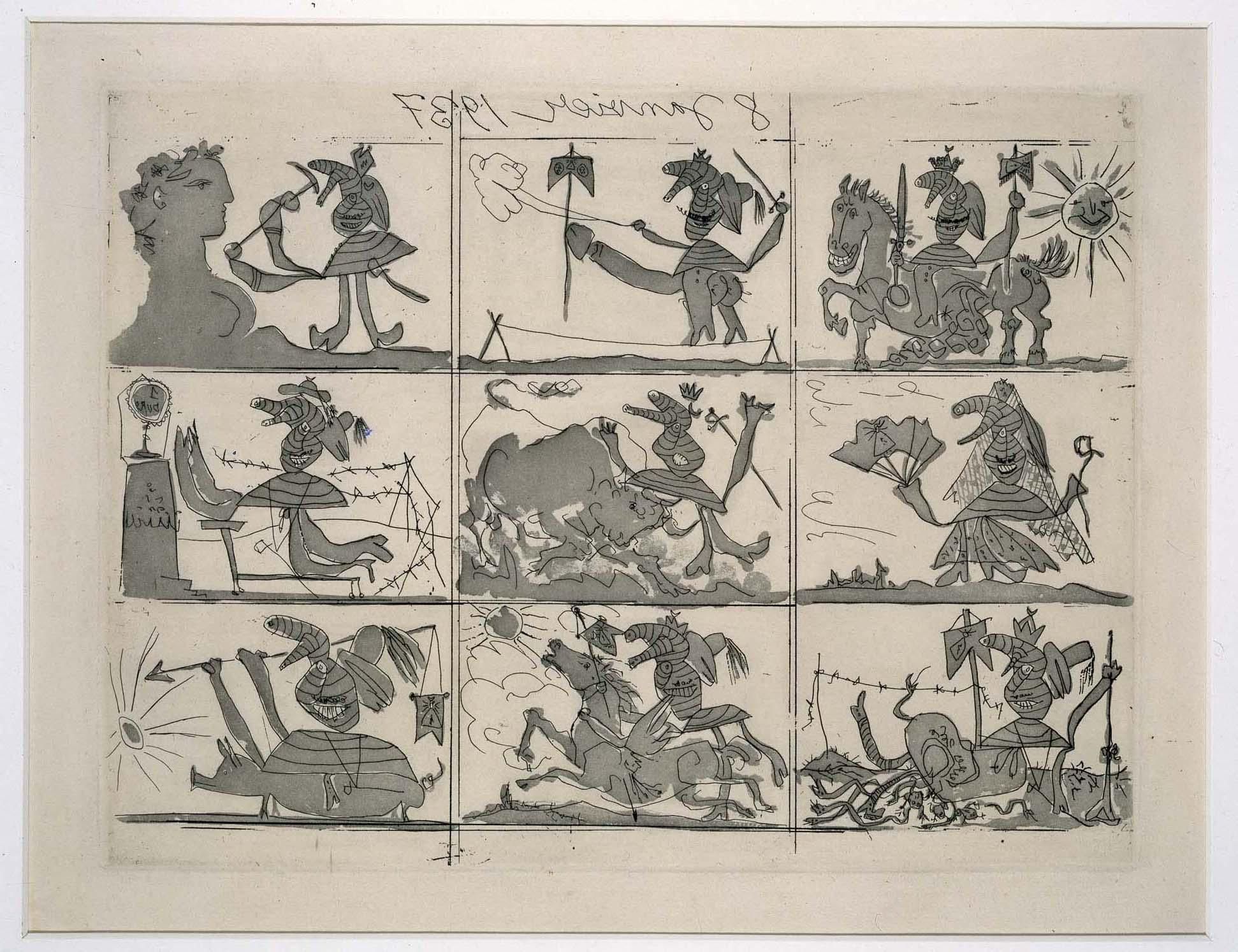
The most detailed biography of Picasso
Publication of the fourth volume written by John Richardson
The appearance in November 2021 of The Minotaur Years 1933−1943, the fourth volume of British specialist John Richardson’s biography of Picasso, was big news not only for Picasso scholars but also for the academic and art historical world. Published posthumously, this fourth volume sadly marks the end of most extensive, meticulous and detailed approach to the first fifty years of the Málaga-born artist’s long life.
Interviews and notes
Richardson’s fascination with Picasso dates back to his teenage years, when he tried to persuade his mother to lend him £50 to buy a print by the artist. Later on, from the 1950s onwards, Richardson coincided with Picasso when they were both living in the south of France and remained close to him for years. Intending to write a biography, Richardson kept a diary of his meetings with Picasso and after the artist’s death his widow Jacqueline Roque agreed to collaborate with the author by allowing him access to the archives and documents she held. Richardson performed a mammoth task; he compiled and organised abundant documented details about the artist’s life with great narrative skill while also providing well-founded interpretations that give an insight into moments and situations. The result is the four volumes that make up A Life of Picasso: The Prodigy, 1881−1906 (vol. 1), 1991; The Cubist Rebel, 1907−1916 (vol. 2), 1996; The Triumphant Years, 1917−1932 (vol. 3), 2007; and The Minotaur Years, 1933−1943 (vol. 4), 2021. The first two volumes have been translated into Spanish and all of them are accompanied by numerous illustrations of works, people and places.
The Minotaur Years
 Pablo Picasso, Minotaur Caressing the Hand of a Sleeping Woman with its Muzzle, Boisgeloup, 18 June 1933. Drypoint on copperplate, printed on paper, 29.9 × 36.5 cm. Date don plate in reverse lower left: Boisgeloup. 18 juin XXXIII. Museo Picasso Málaga. Gift of Bernard Ruiz-Picasso. © FABA Photo: Hugard & Vanoverschelde Photography © Sucesión Pablo Picasso, VEGAP, Madrid, 2022
Pablo Picasso, Minotaur Caressing the Hand of a Sleeping Woman with its Muzzle, Boisgeloup, 18 June 1933. Drypoint on copperplate, printed on paper, 29.9 × 36.5 cm. Date don plate in reverse lower left: Boisgeloup. 18 juin XXXIII. Museo Picasso Málaga. Gift of Bernard Ruiz-Picasso. © FABA Photo: Hugard & Vanoverschelde Photography © Sucesión Pablo Picasso, VEGAP, Madrid, 2022
Volume 4 examines the decade from 1933 to 1943, a period full of tensions, crises and aesthetic discoveries for the artist. The title chosen by Richardson refers to the prints depicting the human and animal figure which Picasso borrowed from Greek mythology for his iconographic repertoire and translated visually into an embodiment of desire, an expression of aggression or guilt, joyfully humanised or with the violence of a menacing animal. It is undoubtedly a symbolic figure of an era fraught with tensions and ups and downs in Picasso’s life.
Social commitment
Richardson also stresses the importance of Picasso’s social and political commitment during this decade. Most biographers usually date this new awareness to the bombing of Guernica in 1937, but Richardson proposes an alternative interpretation of the events, establishing his drawing The Death of Marat of 1934 – a free allusion to the exceptional painting by the French painter Jacques-Louis David – as a unique precedent for the repertoire surrounding Guernica.
 Pablo Picasso, Dream and Lie of Franco (plate I), Paris, 8 January 1937. Illustrated book (published as a folder): etching and sugar-lift aquatint on copperplate, printed on paper, 31.5 × 42 cm. Dated on the plate, upper centre, reversed: 8 janvier 1937. Museo Picasso Málaga. Acquisition 2010. © Museo Picasso Málaga. Photo: Marc Domage © Sucesión Pablo Picasso, VEGAP, Madrid, 2022
Pablo Picasso, Dream and Lie of Franco (plate I), Paris, 8 January 1937. Illustrated book (published as a folder): etching and sugar-lift aquatint on copperplate, printed on paper, 31.5 × 42 cm. Dated on the plate, upper centre, reversed: 8 janvier 1937. Museo Picasso Málaga. Acquisition 2010. © Museo Picasso Málaga. Photo: Marc Domage © Sucesión Pablo Picasso, VEGAP, Madrid, 2022
This fourth and last volume ends here, in 1943. There will be no fifth volume as John Richardson died on 12 March 2019 at the age of 95. His research assistants and editor, who completed the volume, made it possible to bring out the book. Never again will an author be able to combine personal familiarity with the artist with such a wealth of historical fact, perspicacity, hearsay, detail and thoroughness. Although incomplete, it is a unique biography of unquestionable value.

